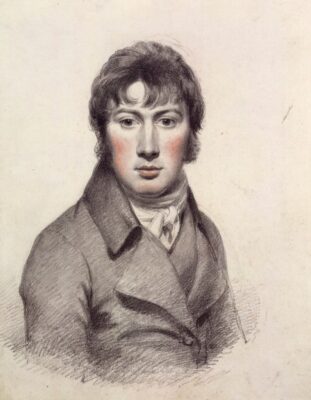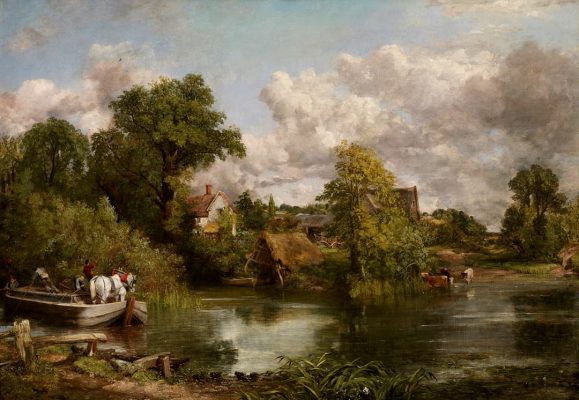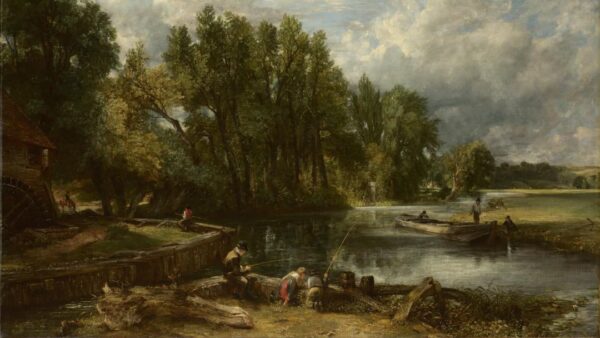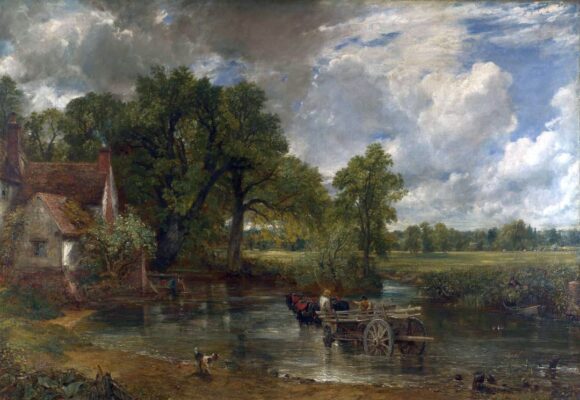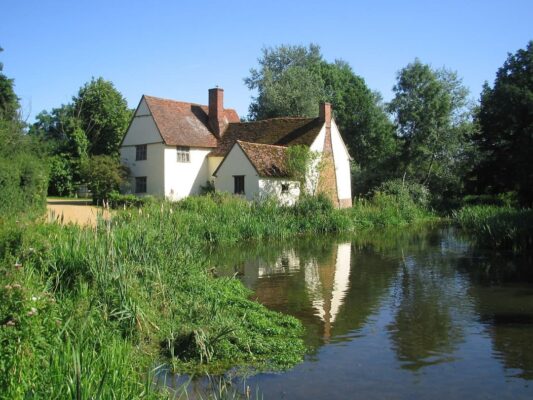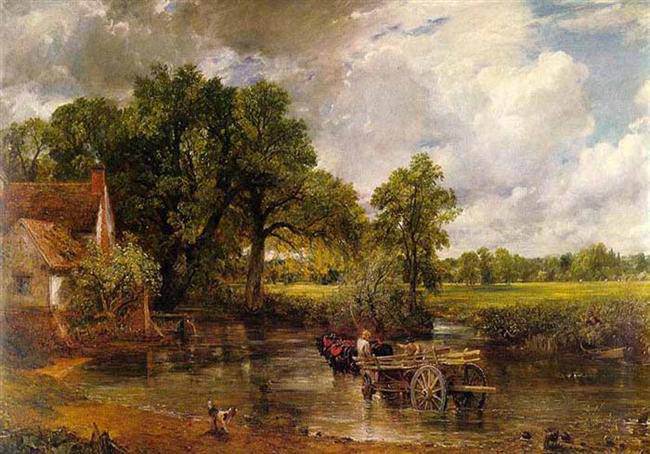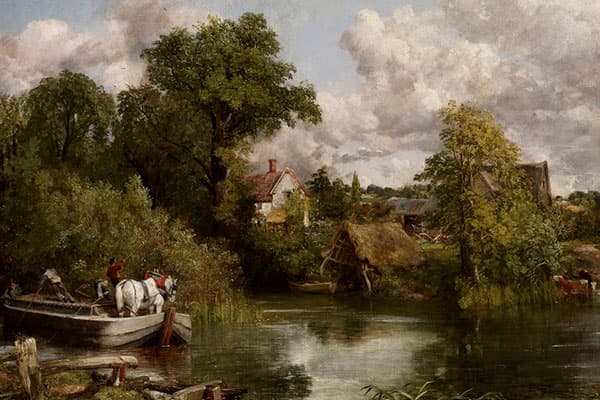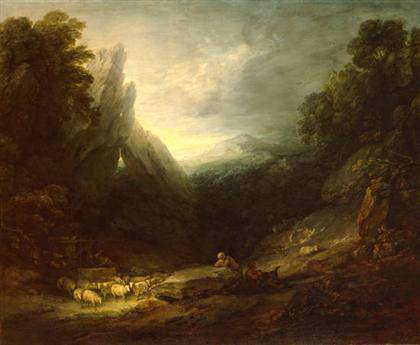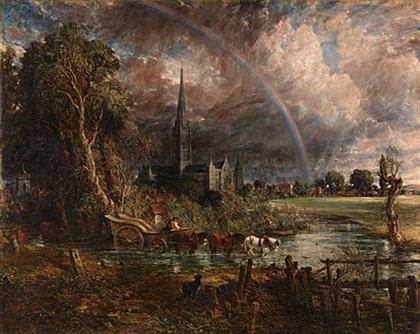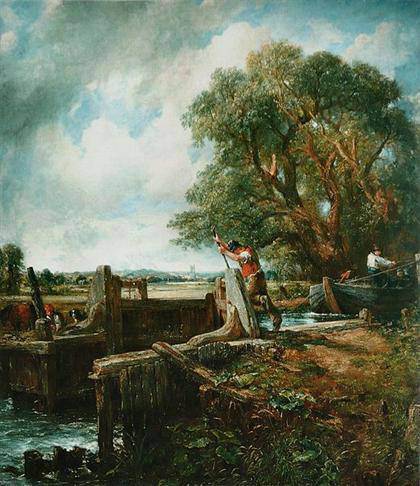John Constable
John Constable is, along with Joseph Mallord William Turner, the great figure of 19th-century British art. But whereas Turner’s career was characterised by a constant restlessness and creative audacity, which led him to travel all over Europe in search of new landscapes and colours, achieving in his last works a style bordering on abstraction, John Constable was the painter of the English countryside, a man in love with nature without artifice or any hint of the “sublime” (“the great vice of the present day is bravura, an attempt to do something beyond the truth“, he wrote early in his career). Yet this supposed self-limitation did not prevent Constable’s work from having an enormous influence on later painters, both within and outside the United Kingdom. Impressionist-era painters (Pissarro, Monet) admired his work, and, well into the 20th century, Lucian Freud wrote: “I may be wrong, but I cannot look at Van Gogh’s ‘Pair of Boots’ without seeing Constable behind them“.
Image: John Constable: “Self-portrait”, 1799-1804. Drawing, 24.8 x 19.4 cm. National Portrait Gallery, London.
John Constable was born in Suffolk in 1776, the son of a miller. At the age of nineteen he travelled to London to work as a draughtsman, entering the Royal Academy in 1799.
Unlike other painters, whose careers underwent radical changes at different stages, Constable’s love affair with his native land began early on and continued throughout his whole life. “Dedham Valley” (1802, Victoria and Albert Museum, London), his first notable work, is an early love letter to an area now known as “Constable Country“. “It is a scene of laboriousness, the landscape of a morning when the daily work in the fields begins. Men and nature form the landscape in close collaboration. The one does not exist without the other, but also vice versa” (Francisca Pérez Carreño, “John Constable”, 1993). During these early years of his career, Constable managed to exhibit several of his paintings at the Royal Academy, but without achieving a professional success that would allow him a certain financial stability. In order to earn some income, he executed some portraits and religious paintings.
John Constable: “The White Horse”, 1819. Oil on canvas, 131.4 × 188.3 cm. Frick Collection, New York ·· John Constable: “Stratford Mill”, 1821. Oil on canvas, 127 × 182.9 cm. National Gallery, London.
In 1816 he married Maria Elizabeth Bicknell, a woman from a relatively wealthy family. Possibly this improvement in his financial situation encouraged Constable to begin painting a series of large canvases, his “six-footers“, beginning with “The White Horse” (1819, Frick Collection, New York, with a full-size sketch in the National Gallery, Washington). Although “The Hay Wain” is today Constable’s most famous work, it was “The White Horse” the painting that launched his career, of which Constable himself wrote: “There are generally in the life of an artist perhaps one, two or three pictures, on which hang more than usual interest – this is mine”.
“The White Horse” was followed by “Stratford Mill” (1821, National Gallery, London), and the aforementioned “The Hay Wain” (1821, National Gallery, London). This painting, now considered the artist’s most famous work, and perhaps the most famous representation of English landscape painting, failed to sell when it was exhibited at the Academy in 1821. However, “The Lock”, painted and sold in 1824, was a success and led Constable to paint a second version of the work. The series of “six footers” closes with “View of the Stour near Dedham” (1822, Huntington Library and Art Gallery) and “The Leaping Horse” (1825, Royal Academy).
John Constable: “The Hay Wain”, 1819. Oil on canvas, 130.2 x 185.4 cm. National Gallery, London ·· Willy Lott’s Cottage, Flatford, the place depicted in “The Hay Wain”, in 2005. Photograph by Lobsan.
After the “six footers”, Constable’s wife’s health deteriorated as a result of tuberculosis. The couple lived in Brighton, in the south of England, so that Mary Elizabeth could spend as much time as possible in the open air. Here Constable painted some interesting coastal landscapes, such as “Chain Pier, Brighton” (1827, Tate Gallery), painted a year before the death of his wife, just after the birth of their seventh child.
The most notable works from the last period of Constable’s life are his views of Salisbury Cathedral, such as his magnificent “Salisbury Cathedral from the Meadows” (1831, National Gallery, London), larger than the largest of his six footers. Constable died in 1837, and was buried with his wife in the graveyard of St John-at-Hampstead in London.
G. Fernández · theartwolf.com
Masterworks by John Constable
More about John Constable
Follow us on:

